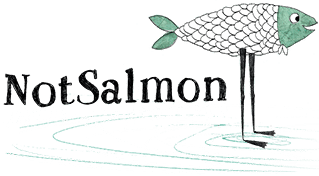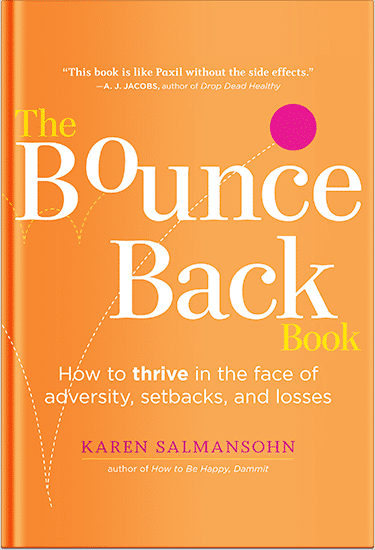 Taking pride in your outdoor space isn’t just about appearances. A clean, healthy yard isn’t only a feast for the eyes but also contributes to a healthier environment, prevents pests, and boosts your property’s value.
Taking pride in your outdoor space isn’t just about appearances. A clean, healthy yard isn’t only a feast for the eyes but also contributes to a healthier environment, prevents pests, and boosts your property’s value.
When you put in the care and attention your yard needs, it also creates a more enjoyable space for your family, furry friends, and guests to relax. Plus, maintaining a beautiful lawn doesn’t have to involve endless hours of work or fancy tools. With a little know-how and consistent upkeep, your yard can thrive in ways you never before thought possible.
Now, grab your gardening gloves, and let’s dig into some of our favorite practical tips to help your yard stay clean, green, and serene. Here’s how you can make it happen.
Regular Debris Removal
The first step to maintaining a pristine yard is removing unwanted debris. Fallen leaves, twigs, and general buildup might seem harmless, but they can create a playground for pests like ants, termites, and rodents.
That damp pile of leaves in the corner of your yard? It’s a prime breeding ground for mold and potentially harmful fungi.
Here are some tips:
- Do Small Cleanups Often: Instead of waiting for a seasonal overhaul, grab a rake or leaf blower weekly to keep buildup under control.
- Use Yard Waste Appropriately: Compost your leaves and organic debris to create nutrient-rich material for your garden instead of tossing it.
- Watch for Problem Areas: Keep an eye on gutters and corners where debris tends to accumulate. A little proactive care saves time in the long run.
Proper Lawn Maintenance
A healthy yard starts with a well-maintained lawn. These tips will help you make sure your grass stays lush and green year-round.
Mowing Matters
Mowing might feel like the most basic part of lawn care, but doing it the right way makes all the difference. Aim to cut your grass to a height of about 3 inches—this length keeps grass sturdy enough to shade its roots and fight off weeds. Try varying your mowing patterns each time to avoid soil compaction.
Aeration and Dethatching
Both aeration and dethatching are often overlooked but are essential steps for healthier soil.
Aeration involves poking small holes in the soil, allowing water, air, and nutrients to penetrate deeply. Dethatching clears out the layer of dead grass and roots smothering your lawn. Do these once or twice a year to give your lawn some breathing room!
Water Wisely
Consistency is key when it comes to watering your lawn. Water deeply but less frequently; aim for about one to one and a half inches of water a week, either from rainfall or irrigation. Watering early in the morning helps reduce evaporation and fungal growth.
Keep Weeds at Bay
Dealing with pesky weeds like dandelions or crabgrass? Don’t yank them out without a strategy. Pulling weeds from the root or applying a pre-emergent herbicide in early spring can keep them from sprouting.
Soil Health and Fertilization
Healthy grass grows best with healthy soil as its foundation. Keep your soil in check by taking time to understand its condition and boosting its nutrient levels.
Recognizing Poor Soil
If your grass looks thin, discolored, or patchy despite your best efforts, your soil might lack nutrients. Testing kits from local garden centers can analyze soil pH and nutrient levels, helping you identify the problem.
Choosing the Right Fertilizer
Not all fertilizers are created equal. The best choice depends on your region and grass type. For example, warm-season grasses like Bermuda or Zoysia need different nutrients than cool-season grasses like Kentucky Bluegrass. Use slow-release fertilizers to avoid overwhelming your plants.
Pest Control
Lawn pests don’t just spoil the look of your yard; they can cause long-term damage to your plants if left unchecked.
Spot Them Early
Common culprits like grubs, armyworms, and chinch bugs can wreak havoc on your lawn. Yellowing or patchy grass might be a sign of these unwelcome invaders.
Managing the Problem
For a natural approach, consider introducing beneficial nematodes (tiny worms that prey on harmful pests). If the situation feels out of control, don’t hesitate to bring in a professional for treatment.
Planting and Landscaping Tips
A great yard requires an innate balance of plants, shrubs, and landscaping features to create an attractive and functional space.
Go Native
Native plants are outdoor superheroes. They’re naturally suited to your climate, require less maintenance, and support local wildlife like butterflies and bees. Incorporate them into your flower beds and borders for an eco-friendly touch.
Combat Erosion with Landscaping
Strategic landscaping, such as planting ground cover or adding rock features on slopes, keeps your yard from losing soil and suffering water damage. It’s practical and adds visual interest.
Design with Low Maintenance in Mind
Choose perennials (plants that come back year after year) and focus on mulching around your garden beds to suppress weeds and retain moisture. This approach makes yard work less of a chore!
Long-Term Yard Health Strategies
A seasonal or monthly care plan goes a long way in keeping your yard gorgeous with minimal stress.
Plan Regularly
Create a calendar with tasks like fertilizing, aerating, weed management, and pest scouting. These consistent touchpoints help you make sure no part of your yard is ever neglected.
Know When to Call for Help
Sometimes, it’s best to bring in the pros. Whether it’s for sprinkler system maintenance, pest treatment, or landscaping redesign, a professional touch can save you time and effort. Plus, they come with expertise that ensures long-lasting results.
A Clean, Healthy Yard Is Within Reach
With a little effort spread out through the year, keeping your yard looking its best doesn’t have to feel like a burden. Regular attention to debris removal, soil health, pest control, and landscaping can transform your yard into a lush, inviting haven for your family and friends.
Start with just one or two tips today. You’ll quickly see how small actions lead to big improvements.
After all, a clean and healthy yard isn’t just about the grass under your feet. It’s about creating a beautiful, low-maintenance outdoor space that brings you joy all year long.
P.S. Before you zip off to your next Internet pit stop, check out these 2 game changers below - that could dramatically upscale your life.
1. Check Out My Book On Enjoying A Well-Lived Life: It’s called "Your To Die For Life: How to Maximize Joy and Minimize Regret Before Your Time Runs Out." Think of it as your life’s manual to cranking up the volume on joy, meaning, and connection. Learn more here.
2. Life Review Therapy - What if you could get a clear picture of where you are versus where you want to be, and find out exactly why you’re not there yet? That’s what Life Review Therapy is all about.. If you’re serious about transforming your life, let’s talk. Learn more HERE.
Think happier. Think calmer.
Think about subscribing for free weekly tools here.
No SPAM, ever! Read the Privacy Policy for more information.
One last step!
Please go to your inbox and click the confirmation link we just emailed you so you can start to get your free weekly NotSalmon Happiness Tools! Plus, you’ll immediately receive a chunklette of Karen’s bestselling Bounce Back Book!


 Taking pride in your outdoor space isn’t just about appearances. A clean, healthy yard isn’t only a feast for the eyes but also contributes to a healthier environment, prevents pests, and boosts your property’s value.
Taking pride in your outdoor space isn’t just about appearances. A clean, healthy yard isn’t only a feast for the eyes but also contributes to a healthier environment, prevents pests, and boosts your property’s value. 